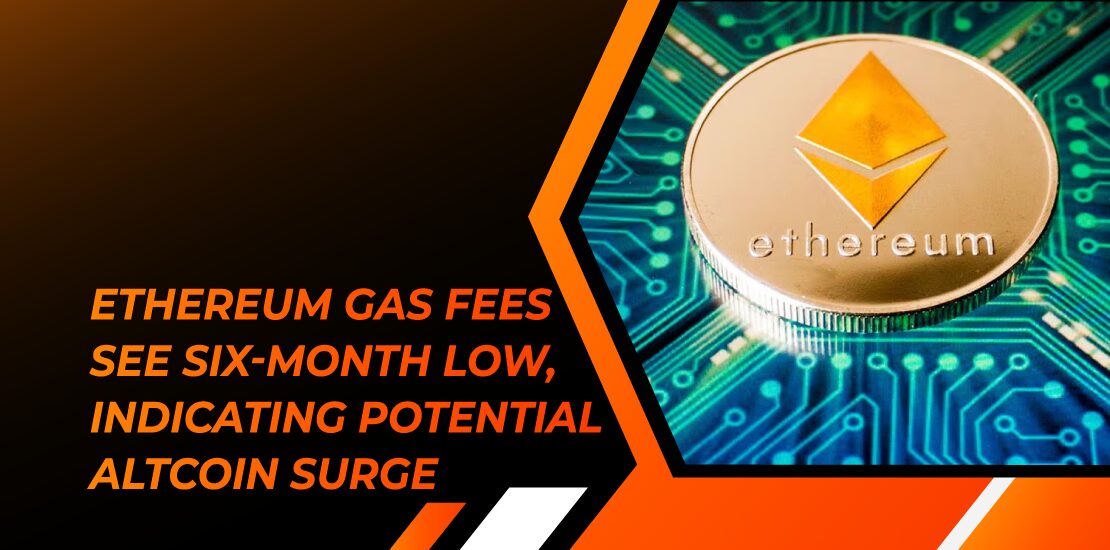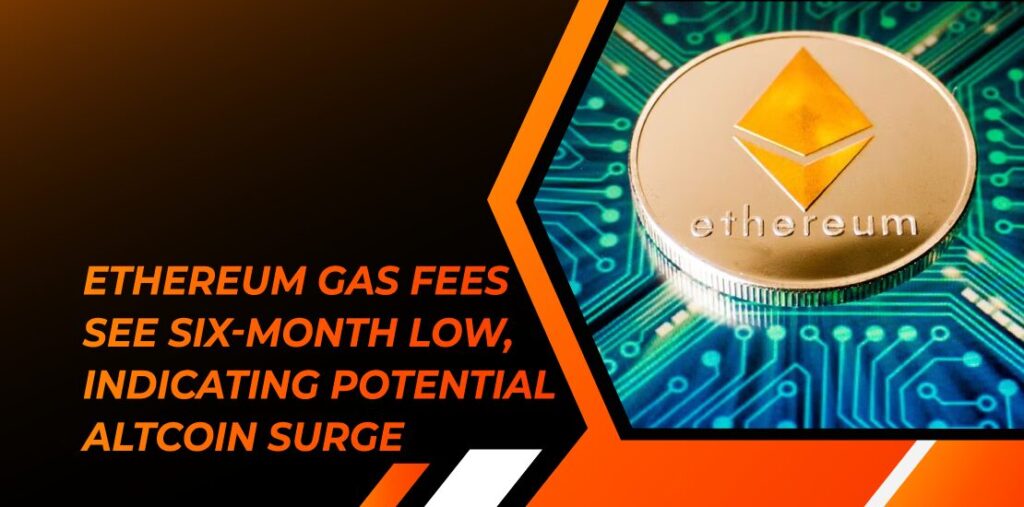- April 29, 2024
- Posted by: [email protected]
- Category:


The recent decrease in gas fees on the Ethereum network, combined with Ethereum’s minor price surge over the weekend, has sparked significant interest and speculation within the cryptocurrency community. As gas fees plummeted to their lowest levels in six months, dropping to an average of $1.12 per transaction, analysts and investors are closely monitoring these developments, considering them as potential indicators of broader market trends, particularly for alternative cryptocurrencies or altcoins.
Santiment, a well-known cryptocurrency analytics platform, has highlighted the inverse relationship between gas fees and investor sentiment, noting that low gas fees frequently correlate with market bottoms, while high gas fees tend to coincide with market tops. This cyclical nature of transaction fees reflects the ebb and flow of market dynamics, with gas fees acting as a barometer of overall market sentiment.
Earlier this year, Ethereum gas fees surged to an eight-month high in February, fueled by heightened interest in the experimental ERC-404 token standard. However, the recent decline in gas fees signals a potential resurgence in network activity, suggesting renewed interest and participation in Ethereum and related blockchain projects. Santiment’s analysis suggests that this could pave the way for an uptick in altcoin activity as investors seek opportunities beyond the dominant cryptocurrencies like Bitcoin and Ethereum.
The reduced gas fees also coincide with a modest uptick in Ether’s price, providing further validation for the notion of an impending market rally. CoinGecko’s data confirms this trend, showing a 4.3% increase in Ether’s value over the past week. Additionally, several Ethereum layer-2 networks, including Optimism, Arbitrum, and Polygon, have experienced notable gains, indicating a broader resurgence in Ethereum-based projects.
Despite the positive indicators, some concerns linger regarding the increase in Ethereum’s circulating supply, driven by reduced network activity. While the transition to a proof-of-stake consensus mechanism has led to significant reductions in Ethereum’s supply through burning mechanisms, the recent uptick in supply raises questions about potential inflationary pressures on the network.
Nonetheless, the overall sentiment remains cautiously optimistic, with many observers viewing the decline in gas fees and the accompanying increase in network activity as positive developments for Ethereum and the broader cryptocurrency ecosystem. As market participants continue to monitor these trends, the coming weeks are likely to provide further insights into the trajectory of Ethereum and alternative cryptocurrencies.



